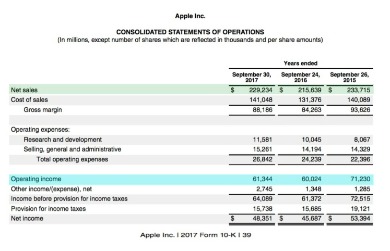
Raising equity is generally seen as gaining access to stable, long-term capital. The same can be said for long-term debt, which gives a company flexibility to pay debt down (or off) over a longer time period. Cash flow describes net cash or cash equivalents entering and exiting a company within a given period. Free cash flow is left over after a company pays for its operating expenses and CapEx.
C.banner International Holdings (HKG:1028) Is Finding It Tricky To Allocate Its Capital – Simply Wall St
C.banner International Holdings (HKG: Is Finding It Tricky To Allocate Its Capital.
Posted: Thu, 31 Aug 2023 22:38:55 GMT [source]
It is essential to monitor your cash flow statement and adjust spending decisions as needed. Keeping your cash flow positive is vital for the long-term success of your business. Positive cash flow means that you have more money coming in than going out, and it is essential to pay bills on time and maintain a healthy financial position. Positive cash flow is essential for businesses to meet their obligations, pay employees and suppliers on time, and invest in growth opportunities. Negative cash flow disrupts operations, increases liquidity risk, and can even lead to insolvency if left unchecked.
Inflation Induced Debt Destruction: Unraveling the Impact of Rising Prices on Financial Liabilities
Dividend payments are typically included in the cash flow to equity, which measures the cash flow generated for shareholders. Investment cash flow refers to all the money the business received from buying or selling long-term assets, such as major equipment. A negative investment cash flow indicates that the company is buying a lot of these assets. This can have a cash flow meaning during growth phases, showing that the business is investing cash back into itself and expanding at a healthy pace. Although cash flow statements have now superseded statements of source and application of funds, funds flow statements may not disappear entirely.
Companies with strong financial flexibility fare better in a downturn by avoiding the costs of financial distress. Businesses take in money from sales as revenues the trial balance and spend money on expenses. They may also receive income from interest, investments, royalties, and licensing agreements and sell products on credit.
Here’s Why Flowers Foods (NYSE:FLO) Can Manage Its Debt Responsibly – Simply Wall St
Here’s Why Flowers Foods (NYSE:FLO) Can Manage Its Debt Responsibly.
Posted: Fri, 18 Aug 2023 16:26:14 GMT [source]
Positive cash flow allows you to invest in your business and take advantage of new opportunities. Having a clear picture of your cash flow enables you to make better use of available capital and minimize costly debt. Once you understand your current and future cash flow, you can make more detailed plans for moving toward your long-term financial goals.
When a company’s cash flow is positive, it suggests a state of financial health. Companies with positive cash flow can pay their day-to-day expenses, invest in new equipment, pay dividends to shareholders, and attract outside investment. On the other hand, when a financial statement reveals negative cash flows, it suggests the company may not have enough cash to cover its daily business costs and risks insolvency. To accurately measure cash flow, businesses must consider all cash inflows and outflows. Cash inflows include income from sales, investments, loans, and other sources of revenue. On the other hand, cash outflows are expenses for operational costs such as salaries and wages, taxes, loan repayments, utility bills, supplier costs, and more.
Where do cash flow statements come from?
Cash inflow from investing activities is generated when a company sells securities, land, buildings, or equipment. Creating your cash flow statements may become challenging as your company matures. Once you’ve grown sufficiently, consider hiring a bookkeeper and consulting with a Certified Public Accountant. That will ensure your financial statements are accurate and help you get the financing you need to continue growing your business.

Is the cash flow to creditors the only indicator of a company’s ability to meet its debt obligations? No, the cash flow to creditors is not the only indicator of a company’s ability to meet its debt obligations. It should be analyzed in conjunction with other financial metrics, such as debt ratio, interest coverage ratio, and credit rating, to gain a comprehensive understanding. Cash flow to creditors includes both interest payments and principal repayments. Principal repayments represent the reduction in the outstanding debt and are crucial to assessing a company’s ability to repay its loans. Cash flow to creditors does not include dividend payments made to common shareholders.
It spotlights details on changes to assets, liabilities, and equity
The repayment schedule for a 10 year standard amortised loan of $10,000 at 7% is presented in table 3.1. Apply for financing, track your business cashflow, and more with a single lendio account. Cash Flow is the net amount of cash and cash-equivalents being transferred in and out of a company. Adam Hayes, Ph.D., CFA, is a financial writer with 15+ years Wall Street experience as a derivatives trader.
- Cost of ownership capital is more difficult to determine than that of borrowed capital.
- To summarize other linkages between a firm’s balance sheet and cash flow from financing activities, changes in long-term debt can be found on the balance sheet, as well as notes to the financial statements.
- Besides his extensive derivative trading expertise, Adam is an expert in economics and behavioral finance.
- These activities also include paying cash dividends, adding or changing loans, or issuing and selling more stock.
- It should not be confused with profitability, which measures the difference between revenue and expenses.
On the other hand, investment capital (or funds) refers to durable resources like machines and buildings in which money invested is tied up for several years. “Cash flow” is one of the most vital elements in the survival of a business. It can be positive, or negative, which is obviously a most undesirable situation. The chapter develops the concept of cash flow and then shows how the funds can be used in the business. Funds are not only generated internally; they may be externally generated, and so the chapter finishes with a discussion of externally generated funds. As you can see, the main difference between the two-method is the way they report cash flow from operating activities.
Does the Cash Flow Statement Show a Company’s Stability?
For example, a growing startup may routinely spend more money than it makes. While these balances are sometimes reconciled in the long run, these unpaid balances do not impact cash flow statements. The cash flow statement complements the balance sheet and income statement and is part of a public company’s financial reporting requirements since 1987. A company can improve its cash flow to creditors by increasing profitability, reducing debt levels, renegotiating loan terms, or generating additional cash through operations.
Future transactions can still affect the company’s cash flow forecasting and long-term financial performance. Cash flows from financing (CFF), or financing cash flow, shows the net flows of cash used to fund the company and its capital. Financing activities include transactions involving issuing debt, equity, and paying dividends. Cash flow from financing activities provides investors insight into a company’s financial strength and how well its capital structure is managed.
Profit
Business owners must track their cash flow over multiple quarters to get a clear picture of how their cash comes and goes. Let’s explore how you might interpret a cash flow statement that shows a positive or negative cash flow for an extended period. Unfortunately, calculating your net cash flows from operating activities is often more complicated. Since it involves the cash receipts and disbursements related to your business’ day-to-day activities, there are typically many more transactions involved.
Some companies sell ownership shares to investors to raise money for operating expenses. Some financing activities bring in money, like selling bonds to generate cash, and others send money out, like paying dividends and buying back stock from investors. For some startups, financing cash flow will play a more significant role than operating cash flow in the company’s overall cash flow management. Below is Walmart’s cash flow statement for the fiscal year ending on Jan. 31, 2019. All amounts are in millions of U.S. dollars.Investments in property, plant, and equipment (PP&E) and acquisitions of other businesses are accounted for in the cash flow from the investing activities section.
What Does “Net Working Capital” Mean?
Thus, the effective interest rates on discount loans are usually much higher than (in fact, more than double) the specified interest rates. Late payment of invoices is one of the most common threats to the continued existence of a small business…. Companies should also strive to improve operational efficiency and create policies that will help them manage their cash flow more effectively.
0 commenti